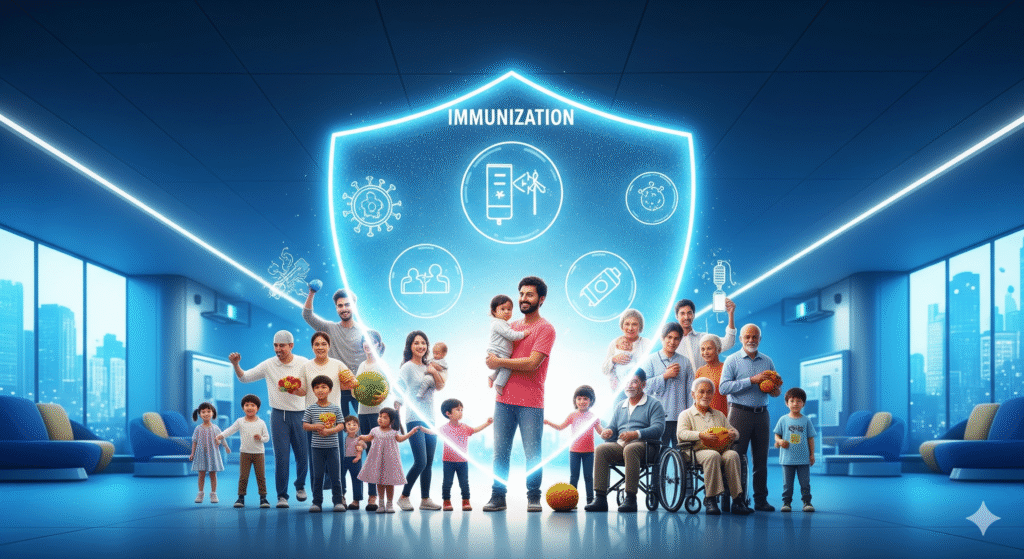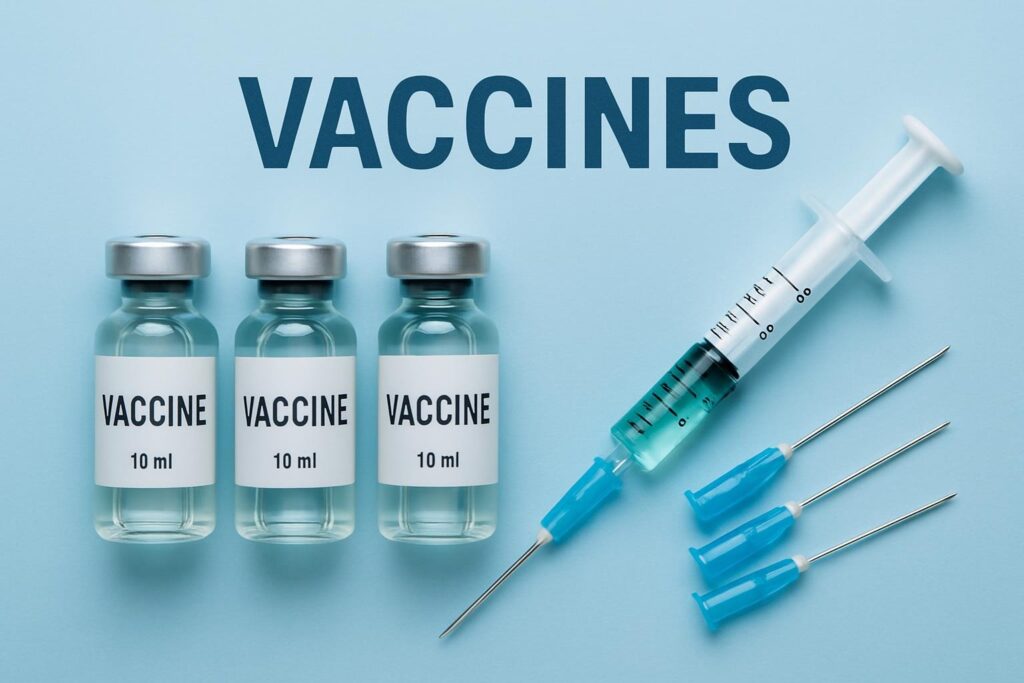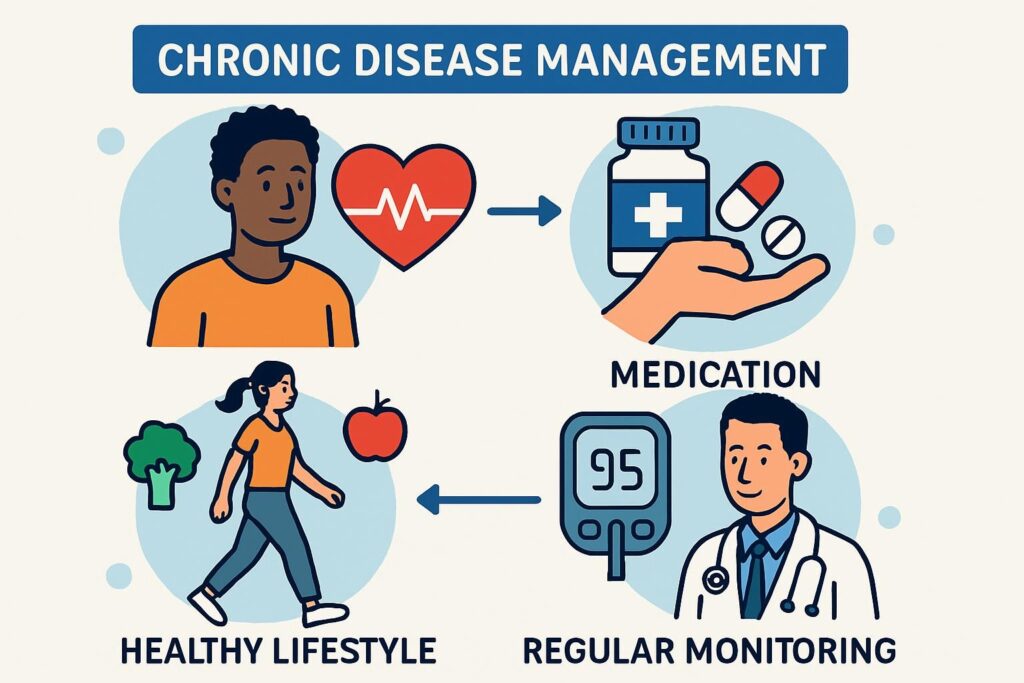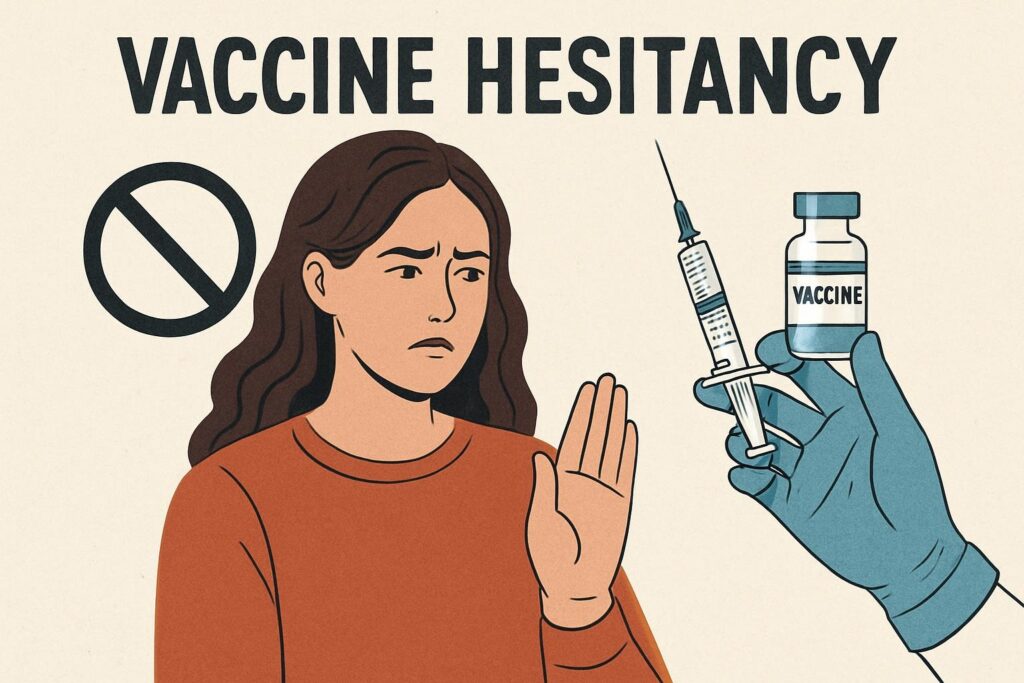
In today’s fast-paced and interconnected world, the old adage “prevention is better than cure“ has never been more accurate. The twin pillars of immunization and preventive care form the foundation of global public health, helping reduce disease, improve quality of life, and significantly cut healthcare costs. Despite their proven benefits, millions of people worldwide still lack access to or are hesitant about these life-saving measures.
This comprehensive guide explores how immunization and preventive care work, why they’re vital, and how societies can bridge the gap to ensure everyone benefits.
What Is Immunization?
Immunization is the process of protecting a person against disease through vaccines. These vaccines stimulate the body’s immune system to recognize and fight pathogens like viruses or bacteria, effectively training the body to respond quickly if exposed in the future.
Types of Immunizations:
- Routine childhood vaccines (e.g., measles, mumps, rubella)
- Adolescent vaccines (e.g., HPV, meningitis)
- Adult immunizations (e.g., flu shot, shingles)
- Travel vaccines (e.g., yellow fever, hepatitis A)
Vaccines are often administered at various life stages, ensuring ongoing protection against evolving threats.
What Is Preventive Care?
Preventive care refers to medical services that focus on preventing diseases rather than treating them after symptoms appear. It includes:
- Routine screenings (e.g., blood pressure, cholesterol, cancer)
- Health counseling (e.g., smoking cessation, weight loss)
- Regular physical exams
- Lifestyle education and disease risk assessments
Preventive care often works in tandem with immunization to create a comprehensive shield against illness.
The Impact of Immunization: Global Lives Saved
The power of vaccines is well documented. According to the World Health Organization (WHO), immunization efforts have saved at least 154 million lives over the last 50 years—mostly among infants and children (WHO).
Some of the standout achievements of immunization include:
- Eradication of smallpox worldwide.
- Near-elimination of polio (only a few endemic regions remain).
- Massive reduction in diseases like measles, diphtheria, and tetanus.
- Introduction of HPV vaccines, preventing cervical and other cancers.
Moreover, measles vaccination alone is responsible for about 60% of the lives saved through immunization over the last five decades.

Economic Benefits: Vaccines Save Money
Beyond lives, immunization and preventive care also protect wallets. According to a study published in the Journal of Health Economics, for every $1 invested in vaccines, society saves an estimated $20–$52 in avoided healthcare costs and productivity losses (NCBI).
In the United States:
- Childhood vaccines between 1994 and 2023 prevented:
- Over 1 million deaths
- 507 million illnesses
- $2.7 trillion in societal costs (CDC)
Countries like Canada and Germany also report similar success with national immunization strategies, leading to reduced hospitalizations and public health spending (Canada.ca).
Preventive Care: More Than Just Vaccines
Preventive care goes far beyond vaccination. It empowers people to live healthier lives through early detection, lifestyle changes, and timely interventions.
Key Components of Preventive Care:
- Screenings & Early Diagnosis – Detect diseases like cancer, diabetes, or heart disease before symptoms appear.
- Lifestyle Coaching – Encourages healthy eating, physical activity, and mental wellness.
- Regular Health Check-ups – Helps identify potential health concerns early.
- Chronic Disease Management – Prevents escalation of conditions like hypertension or asthma.
These steps help people stay healthy longer—and avoid the pain and cost of treating late-stage illnesses.

Why Preventive Care & Immunization Work Best Together
Together, immunization and preventive care create a dual-layer defense system:
- Vaccines protect you from infectious diseases.
- Preventive care helps manage long-term health and non-communicable diseases.
This integrated approach reduces:
- Emergency room visits
- Unnecessary hospitalizations
- Long-term disability
- Out-of-pocket costs
For example, a diabetic patient who receives flu and pneumonia vaccines as part of preventive care has a significantly lower risk of severe complications.
Global Immunization Challenges (And How to Overcome Them)
Despite their proven success, vaccines and preventive care face major challenges globally:
1. Vaccine Hesitancy
Fueled by misinformation and distrust, vaccine hesitancy has become one of the top ten global health threats, according to WHO.
Solution: Community-based education, transparent data sharing, and promoting vaccine success stories help rebuild trust (WHO).

2. Zero-Dose Children
In 2024, over 14 million children globally received zero vaccines, most of them in fragile or conflict-affected regions.
Solution: Expanding outreach through mobile clinics, education, and local partnerships can bridge access gaps (Reuters).
3. Economic Barriers
In some places, vaccines are either too expensive or not covered by insurance. A 2025 report noted that a hospital charged $1,400 for a single MMRV dose in the U.S. before advocacy reduced the cost (Washington Post).
Solution: Government-backed programs like the Vaccines for Children (VFC) Program in the U.S. ensure free vaccines for eligible families (Wikipedia – VFC).
4. Lack of Infrastructure
Rural regions often lack healthcare facilities and storage for vaccines.
Solution: Investment in cold chain logistics, rural clinics, and digital health records improves delivery and follow-up (BMC Public Health).
Success Stories: Countries Leading the Way
Several countries and initiatives serve as models for successful immunization and preventive care:
🇷🇼 Rwanda
With robust community health programs and mobile health tracking, Rwanda boasts one of Africa’s highest childhood immunization rates.
🇧🇩 Bangladesh
Through door-to-door vaccination programs and mass education, Bangladesh has dramatically reduced child mortality rates.
🩺 Humanly Possible Campaign
The WHO, UNICEF, GAVI, and partners launched Humanly Possible, a global push to ensure equitable vaccine access, especially in low-income countries (WHO).
Digital Innovations Boosting Preventive Health
The integration of technology in healthcare is making preventive care and immunization more accessible:
- Electronic health records (EHRs): Automate vaccination tracking.
- SMS reminders: Improve vaccination appointment attendance.
- Telehealth visits: Enable remote screening and consultation.
- AI data modeling: Predict disease outbreaks and inform vaccine supply.
These solutions are being tested and implemented in countries across Africa, Asia, and the Americas with promising results.
How Individuals Can Help
Preventive care and immunization are not just the responsibility of governments or healthcare providers. You play a crucial role too.
What You Can Do:
- Stay Informed: Learn the recommended vaccines for your age group.
- Get Vaccinated: Don’t skip your shots—especially seasonal ones like the flu vaccine.
- Encourage Others: Educate friends and family about the benefits of prevention.
- Attend Screenings: Go for annual health checkups and screenings.
- Support Policy: Advocate for better funding and healthcare access in your community.
The Future of Preventive Care: What’s Next?
The next frontier involves:
- Personalized preventive care using genetic and behavioral data.
- Global collaboration to ensure vaccine equity.
- Pandemic preparedness through rapid vaccine development and distribution.
- Climate-informed healthcare, recognizing how changing environments affect disease patterns.
As medicine evolves, prevention will remain at the heart of every public health policy.
Frequently Asked Questions (FAQs)
Q: Why is prevention important in public health policy?
A: Prevention helps reduce the incidence of diseases and health conditions, leading to healthier populations and lower healthcare costs.
Q: How does medicine evolving impact prevention strategies?
A: As medicine advances, new prevention methods and technologies become available, enhancing the effectiveness of public health policies.
Q: Will prevention always be a priority in healthcare?
A: Yes, prevention is fundamental to public health and remains a key focus to improve overall health outcomes.
Q: What are examples of prevention in public health?
A: Vaccinations, health education, screenings, and lifestyle interventions are common preventive measures.
Q: How can individuals contribute to prevention efforts?
A: By adopting healthy behaviors, participating in screenings, and following public health guidelines, individuals support prevention initiatives.
